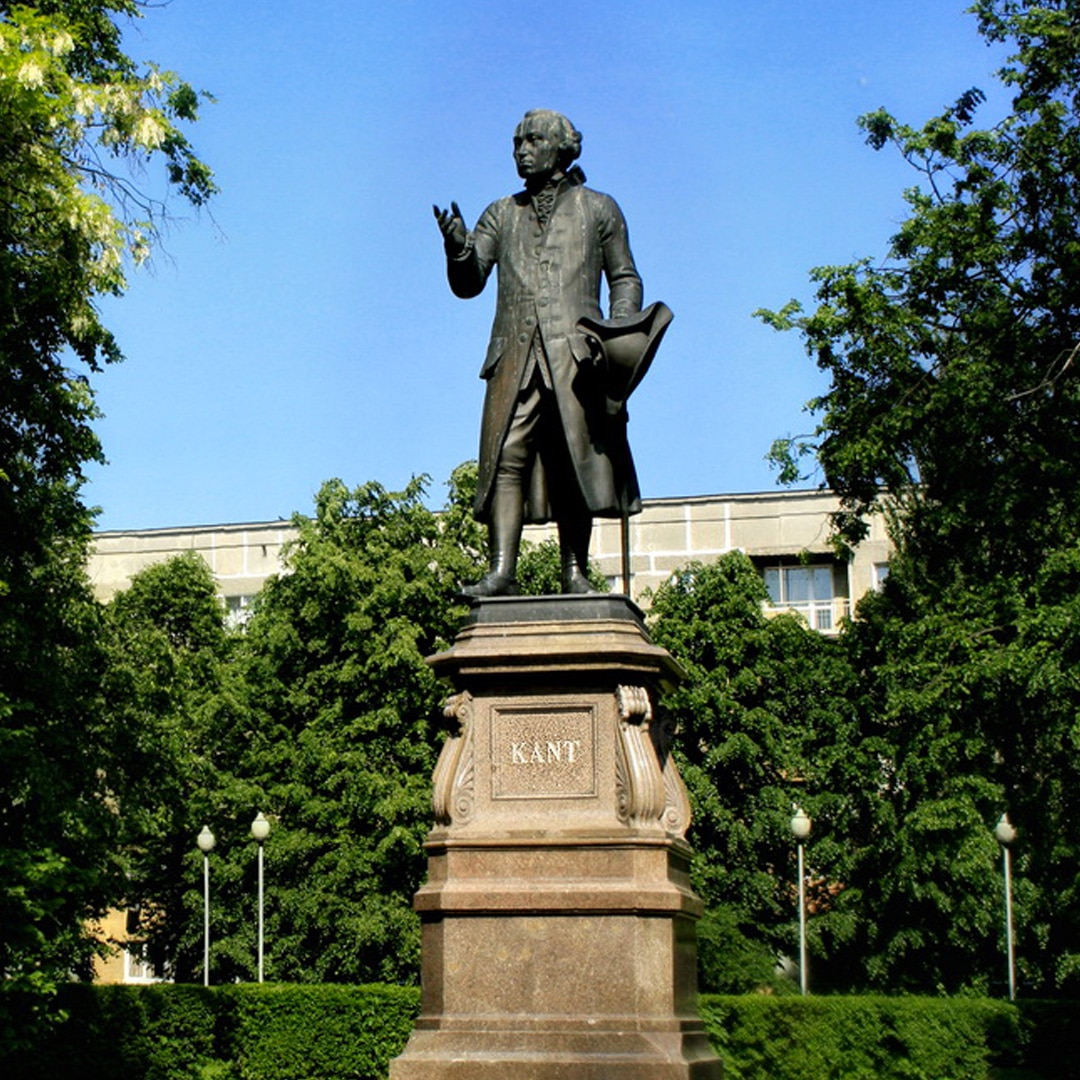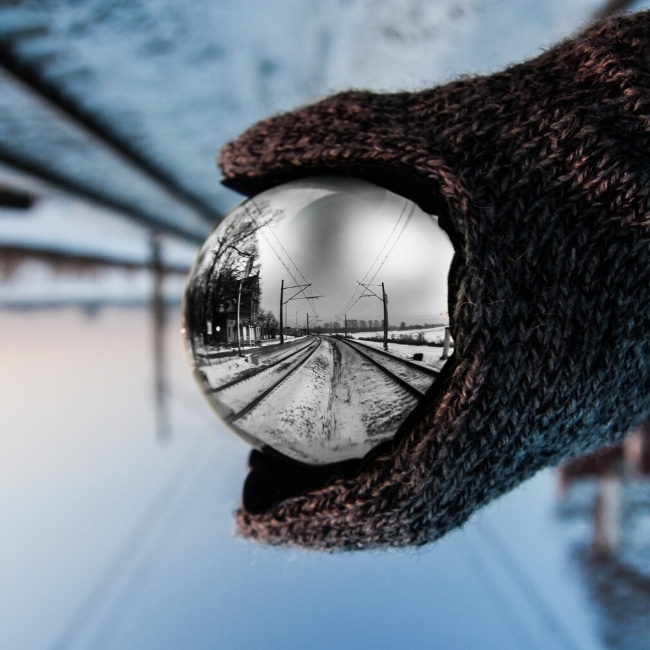Extending the education pathway

Extending the education pathway
Opinion + AnalysisBusiness + LeadershipRelationshipsSociety + Culture
BY The Ethics Centre 16 JAN 2020
In the course of 2019, The Ethics Centre reviewed and adopted a new strategy for the five years to 2024.
The key insight to emerge from the strategic planning process was that the Centre should focus on growing its impact through innovation, partnerships, platforms and pathways.
We focus here on just one of those factors – ‘pathways’ and, in particular, the education pathway.
The Ethics Centre is not new to the education game. To this day, the establishment of Primary Ethics – which teaches tens of thousands of primary students every week in NSW – is one of our most significant achievements.
As Primary Ethics continues to break new ground, we feel it’s time to bring our collective skills to bear along the broader education pathway.
With this in mind, we’re delighted to report that The Ethics Centre and NSW Department of Education and Training have signed a partnership to develop curriculum resources and materials to support the teaching and learning of ethical deliberation skills in NSW schools, including within existing key learning areas.
This exciting project will see us working with and through the Department’s Catalyst Innovation Lab alongside gifted teachers and curriculum experts – rather than merely seeking to influence from the outside.
In addition, we have also formed a further partnership with one of the Centre’s Ethics Alliance members, Knox Grammar School. This will involve the establishment of an ‘Ethicist-in-residence’ at the school, the application of new approaches to exploring ethical challenges faced by young adults, and the development of a pilot program where students in their final years of secondary education undertake an ethics fellowship at the Centre.
In due course, we hope that the work pioneered in these two partnerships and others will produce scalable platforms that can be extended across Australia. Detailed plans come next, and we believe the potential for impact along this pathway is significant.
We believe ethics education is a central component of lifelong learning – extending from the earliest days of schooling through secondary schooling, higher education and into the workplace.
The broadening of the education pathway therefore provides new opportunities for The Ethics Centre and Primary Ethics to work together – sharing our complementary skills and experience in service of our shared objectives, for the common good.
If you have an interest in supporting this work, at any point along the pathway, then please contact Dr Simon Longstaff at The Ethics Centre, or Evan Hannah, who leads the team at Primary Ethics.
Dr Simon Longstaff is Executive Director of The Ethics Centre: www.ethics.org.au
Evan Hannah can be contacted via Primary Ethics at: www.primaryethics.com.au
Ethics in your inbox.
Get the latest inspiration, intelligence, events & more.
By signing up you agree to our privacy policy
You might be interested in…
Opinion + Analysis
Business + Leadership
Why you should care about where you keep your money
Big thinker
Relationships
Big Thinker: René Descartes
Opinion + Analysis
Relationships, Society + Culture
If we’re going to build a better world, we need a better kind of ethics
Opinion + Analysis
Health + Wellbeing, Relationships
Should parents tell kids the truth about Santa?
BY The Ethics Centre
The Ethics Centre is a not-for-profit organisation developing innovative programs, services and experiences, designed to bring ethics to the centre of professional and personal life.
The thorny ethics of corporate sponsorships
The thorny ethics of corporate sponsorships
WATCHBusiness + Leadership
BY The Ethics Alliance The Ethics Centre 10 DEC 2019
With a workforce that increasingly prizes purpose led organisations, how can businesses make mutually beneficial brand alignments as an extension of their own values?
And what should they do if it all goes horribly wrong? In this series of short interviews, The Ethics Alliance draw on the experiences of organisations who have successfully overseen hugely profitable and meaningful partnerships and weathered the crisis of negative associations to pave a way forward.
Ethics in your inbox.
Get the latest inspiration, intelligence, events & more.
By signing up you agree to our privacy policy
You might be interested in…
Opinion + Analysis
Business + Leadership
What are millennials looking for at work?
Opinion + Analysis
Business + Leadership, Health + Wellbeing
Navigating a workforce through stressful times
Opinion + Analysis
Business + Leadership, Health + Wellbeing, Relationships
Office flings and firings
Explainer
Business + Leadership, Politics + Human Rights, Relationships
Ethics Explainer: Power
BY The Ethics Alliance
The Ethics Alliance is a community of organisations sharing insights and learning together, to find a better way of doing business. The Alliance is an initiative of The Ethics Centre.
BY The Ethics Centre
The Ethics Centre is a not-for-profit organisation developing innovative programs, services and experiences, designed to bring ethics to the centre of professional and personal life.
Explainer: Getting to know Richard Branson's B Team

Explainer: Getting to know Richard Branson’s B Team
Opinion + AnalysisBusiness + Leadership
BY The Ethics Alliance Cris 5 DEC 2019
If you ever dreamed of rubbing shoulders with the brightest shining stars of business, you probably couldn’t turn down an invitation to join Richard Branson’s B Team.
The team of luminaries was launched by the Virgin Group founder in 2013 to power a movement to use business to build a better world.
Its goals
The B Team aims to “confront the crisis of conformity in leadership”.
“We need bold and brave leaders, willing and able to transform their own practices by embracing purpose-driven and holistic leadership, with humanity at the heart, aligned with the principles of sustainability, equality and accountability,” according to its website.
“Plan A – where business has been motivated primarily by profit – is no longer an option. We knew this when we came together in 2013. United in the belief that the private sector can, and must, redefine both its responsibilities and its own terms of success, we imagined a ‘Plan B’ – for concerted, positive action to ensure business becomes a driving force for social, environmental and economic benefit.
“We are focused on driving action to achieve this vision by starting ‘at home’ in our own companies, taking collective action to scale systemic solutions and using our voice where we can make a difference.”
Membership
Aside from Branson himself, who has charisma to burn, his hand-picked team of leaders include:
- Co-founder and former Puma chair, Jochen Zeitz
- Chairman & CEO of Kering, François-Henri Pinault
- Chairman Emeritus, Tata Sons, Ratan Tata
- Chairman, Yunus Centre, Professor Muhammad Yunus
- General Secretary of the International Trade Union Confederation Sharan Burrow
- President and CEO, Mastercard, Ajay Banga
- Founder and CEO of Thrive Global, Arianna Huffington
- Former Chairman and Chief Executive Officer, Dow Chemical and DowDuPont, Andrew Liveris
Its influence
Branson is a master of marketing, and has long cultivated an image of a fun-loving, brilliant, rule-breaking entrepreneur with a socially-responsible heart. He has launched around 400 companies and has become one of the world’s most influential leaders, with a personal wealth estimated at $7.7 billion.
A stay at his luxury resort Necker Island in the British Virgin Islands is the modern-day equivalent of Charlie Bucket’s “golden ticket” to the chocolate factory (from the Roald Dahl children’s book). It was, for instance, the first holiday destination for the Obama family after they left the White House in 2017.
Branson has long harnessed his star power to humanitarian ventures and he has now provided B Team “vehicles” for others to do the same.
Its projects
The B Team has three causes:
Climate: committing to a just transition to net-zero emissions by 2050.
Workplace equality: creating working environments that recognise and respect the human rights and talents of all people.
Governance: raising the bar on what good governance looks like – and keeping accountability, sustainability and equality at the centre of these efforts.
Recent achievements
At the UN Climate Action Summit in September, B Team Leader and Allianz CEO Oliver Bäte led a group of 12 asset owners with $A3.5 trillion in assets under management in committing to net-zero emissions by 2050—a target aligned with a pathway to 1.5°C warming – and helping companies within their portfolios to achieve the same goal. They join the 87 companies who also made this commitment.
In 2015, The B Team was instrumental in ensuring that a commitment to net-zero emissions by 2050 was included in the text of the Paris Agreement.
In Australia
The local arm of the B Team launched in October 2018 and includes Branson, Sharan Burrow as vice-chair, ANZ Bank chair David Gonski as co-chair, and Chief Executive Women director Lynette Mayne as co-chair. Other members are:
- Scentre Group CEO Peter Allan
- Suncorp Group CEO Michael Cameron
- Former Chairman and CEO of Dow Chemical, Andrew Liveris
- CEO of MLC, Geoff Lloyd
- CEO of Mirvac Susan Lloyd Hurwitz
- Australian Council for International Development president Sam Mostyn
- Chairman of the Light Warrior Group Radek Sali
- Executive Chairman of Carnival Australia Ann Sherry
- EnergyAustralia managing director Catherine Tanna.
MLC’s Lloyd says the group aims to use the power of its influence to make the conversations “go viral”.
“It is about a core group of leaders who will represent those principles and drive those initiatives and connect through to the global B Team. We are trying to create a conversation and lead that conversation through the individuals in those businesses that are part of it.
“The principles are really all there to help leaders lead their businesses and provide a course, if you like, direction, some guidance as to how we should think very differently about work.
“There is a community expectation that business is there to do good.”
The 100% Human project
This initiative brings together more than 150 organisations around the world to shape and identify the elements that define a 100% Human organisation: respect, equality, growth, belonging and purpose. The aim is to recruit to the cause one million companies globally.
100% Human has been collecting examples of innovative thinking in its published Experiments Collection, which provides details of around 200 workplace initiatives, which are trying out new ways of working. These “experiments” include: providing opportunities for refugees and migrants; championing diversity, inclusion and belonging; and supporting employees’ mental health and wellbeing.
The initiative was launched in Australia in June, 2019 with the five principles of: strategically planning for technology, creating career growth opportunities, focusing on the whole person, establishing support networks, and being publicly accountable.
The former CEO of Perpetual Ltd, Lloyd joined MLC Wealth a year ago to engineer its separation from the National Australia Bank. He says he introduced some of 100% Human’s leadership philosophies to Perpetual in 2015 and is now using them to help develop a new, individual workplace culture at MLC.
“At MLC, we’re reviewing all of our people processes and policies and aligning our culture towards that of allowing people to be 100% human at work,” he says. “So, that’s from our leave policies, our carer leave, our flexibility, the way in which we lead ourselves, the way in which our leadership team really do express, and understand that our team have complex lives and needs.”

This article was originally written for The Ethics Alliance. Find out more about this corporate membership program. Already a member? Log in to the membership portal for more content and tools here.
Ethics in your inbox.
Get the latest inspiration, intelligence, events & more.
By signing up you agree to our privacy policy
You might be interested in…
Opinion + Analysis
Business + Leadership
The 6 ways corporate values fail
Opinion + Analysis
Business + Leadership, Health + Wellbeing
The super loophole being exploited by the gig economy
Opinion + Analysis
Business + Leadership
Perils of an unforgiving workplace
Opinion + Analysis
Business + Leadership
‘Woke’ companies: Do they really mean what they say?
BY The Ethics Alliance
The Ethics Alliance is a community of organisations sharing insights and learning together, to find a better way of doing business. The Alliance is an initiative of The Ethics Centre.
BY Cris
Pay up: income inequity breeds resentment

Pay up: income inequity breeds resentment
Opinion + AnalysisBusiness + Leadership
BY Fiona Smith Cris 5 DEC 2019
Public outrage over multi-million dollar CEO salaries will never go away when employees are underpaid. It offends our sense of fairness and the increasingly threadbare notion of Australia as an egalitarian nation.
This point is not lost on many who read about Woolworths’ admission it underpaid nearly 6,000 staff over ten years by a total $300 million.
The supermarket chain had failed to account for the actual hours that staff were working, with out-of-business-hours work patterns attracting penalty rates, which were not being added to their salaries.
Other companies which have been caught out with similar underpayments include Qantas, ABC, Commonwealth Bank, Bunnings, Super Retail Group and Michael Hill Jewellers.
While some business leaders laid blame on the complexity of modern awards, Fair Work Ombudsman, Sandra Parker said employers were at fault with “ineffective governance combined with complacency and carelessness toward employee entitlements”.
Human resources leader, Alec Bashinsky, was succinct in his response: “This is 101 stuff and not acceptable in any scenario”. For 14 years, Bashinsky was Asia Pacific talent leader for Deloitte, which employed more than 3,000 people in Australia alone.
Revelations such as the underpayments just add more fuel to the conflagration of distrust and anger, which has led to the rise of anti-establishment political movements around the world.
In Australia, it builds on a mountain of evidence of businesses behaving badly, following revelations of the deliberate underpayments and worker exploitation in the franchising sector and the litany of unethical decision-making unearthed in the recent Royal Commission into financial services.
CEO’s get richer, worker pay stagnates
While company reputations have been trashed over the past couple of years, business leaders have continued to prosper. Company boards responded to public resentment over CEO salaries by reducing the pay of incoming CEO’s… while handing out the second-biggest bonuses of the past 18 years.
Thanks to those bonuses, the median realised pay for an ASX100 CEO reached $4.5m in the last financial year, according to a report by the Australian Council of Superannuation Investors.
Leaders whose companies were directly involved in recent scandals have been punished. Big bank CEO’s saw their remuneration fall over the past year. However, total remuneration for top 50 CEO’s increased by 4 per cent on average, compared to general wage growth at 2.2 per cent, according to the Australian Financial Review.
Macquarie Bank’s Shemara Wikramanayake was the highest paid with $18 million, followed by Goodman Group’s Gregory Goodman with $12.8 million.
Labor MP and economist, Andrew Leigh says the growing gap between the leaders and the led poses a threat to the Australian ethic of egalitarianism.
“Australia is a country where we don’t have private areas on the beaches, we like to say ‘mate’ rather than ‘sir’, we sit in the front seat of taxis and we don’t stand up when the prime minister enters the room,” says Leigh, who is also Deputy Chairman of the Parliamentary Economics Committee.
Former chairman of the Australian Competition and Consumer Commission, Allan Fels, has written: “The increase in pay levels for CEO’s has occurred at a time when public trust in business is at a low ebb and wages growth in the broader economy can best be described as anaemic”.
The rising levels of income inequality create serious social harm, according to the Australian Council of Social Service (ACOSS).
Someone in the highest one per cent now earns more in a fortnight than someone in the lowest 5 per cent earns in an entire year.
“Excessive inequality in any society is harmful. When people with low incomes and wealth are left behind, they struggle to reach a socially acceptable living standard and to participate in society. This causes divisions in our society,” according to ACOSS, after the release of its Inequality in Australia report in July.
“Too much inequality is also bad for the economy. When resources and power are concentrated in fewer hands, or people are too impoverished to participate effectively in the paid workforce, or acquire the skills to do so, economic growth is diminished.”
Reining in the excesses
Investors have a mechanism to act if they believe boards have been overly-generous in executive remuneration. In 2018, 12 companies in the ASX200 had shareholders vote down board remuneration reports in a “first strike” action. A further seven were close to experiencing a first strike.
According to the “two-strike rule”, if subsequent remuneration reports are voted down by at least 25 per cent of shareholders, the board positions may be subject to a spill motion. At this point, no company has experienced a board spill as a result of this rule.
The two-strike rule came into effect in 2011 after a Productivity Commission Inquiry into Executive Remuneration found that executive pay went up over 250 per cent from 1993 to 2007.
Labor went into the last Federal election with a policy aimed at encouraging more moderation in executive pay, requiring companies to publish the ratio of the CEO remuneration to the median workers’ pay.
At present, ASX-listed companies have to publish their policies for determining the nature and amount of remuneration paid to key management personnel. However, without a requirement to divulge what the median worker is paid, a ratio cannot be calculated.
The United Kingdom and the United States have both introduced new regulation to require their biggest listed companies to divulge and justify the difference between executive salaries and average annual pay for their employees.
This is going to put more pressure on CEO salaries as the public gets a clear picture. Research in the US shows, for instance, that the average person thinks the pay ratio is 30:1 when the average is actually closer to 300:1.
Those disclosures can have material impacts on a business. The US city of Portland has imposed a 10 per cent tax surcharge on companies with top executives making more than 100 times what their median worker is paid and a 20 per cent surcharge if pay gaps exceed 250 to one.
Leigh says the top 50 CEO’s in Australia are now earning packages at a ratio of around 150 or 200 of median wages in their organisations.
“Those ratios are truly out of whack. If you go back to the 1950s, and 1960s, workers at Australia’s largest firms could earn in a decade what the CEO earned in a year.
“Now, it would take multiple careers for workers in many firms to earn what the CEO earns in a year.”
Setting a fair pay formula
When you have these two issues running concurrently – ever-rising CEO pay and underpayment of workers – it seems appropriate to take a new look at what fair pay looks like.
Some companies have tried to ensure fairness by setting CEO pay as a multiple of the salary of an organisation’s lowest-paid worker.
Mondragon is a Spanish co-op famous for its egalitarian principles. Its CEO is paid nine times more than what its lowest-paid worker earns. In comparison, the CEO of an average FTSE 100 company is paid 129 times what their lowest-paid worker earns.
Mondragon is not well-known in Australia, but is a vast global enterprise, employing more than 75,000 people in 35 countries and with sales of more than Euro12 billion per year – equivalent to Kellogg or Visa.
US ice cream company Ben & Jerry’s took inspiration from Mondragon, setting a five-to-one salary ratio when it started in 1985.
Writing in their book Ben Jerry’s Double Dip: How to Run a Values Led Business and Make Money Too, the founders Ben Cohen and Jerry Greenfield say: “The compressed salary ratio dealt with an issue that’s at the core of people’s concerns about business and their alienation from their jobs: the people at the bottom of the ladder, the people who do all the actual physical work, are paid very poorly compared to the people at the top of the ladder.
“When we started our business, we were the people at the bottom. That’s whom we identified with. So we were happy to put into place a system whereby anytime the people on the top of the organisation wanted to give themselves a raise, they’d have to give the people on the bottom a raise as well.”
Ben & Jerry’s kept that arrangement in place for 16 years but, when Cohen wanted to retire, attracting a replacement CEO meant raising the rate to a seven-to-one ratio.
“ … as the company grew, the salary ratio became problematic. Some people in upper-level management believed that we couldn’t afford to raise everyone’s salaries, and the salary ratio was, therefore, limiting the offers we could make to the top people we could recruit,” wrote the founders in 1998.
“Other people – Ben included – thought money wasn’t the problem, and that we’d always had problems with our recruitment process. Ben points out frequently that eliminating the salary ratio, which we did in 1995, has not eliminated our recruiting problems.”
The New Zealand Shareholders Association has also called (in 2014) for CEO base pay to be capped at no more than 20 times the average wage.
Fairness is important to us
Leigh, who wrote a book Battlers and Billionaires on inequality, says people naturally benchmark themselves against those around them: “That is how we figure out what we are worth”.
The point is that people care less about the dollar figure they are paid than they do about how it compares to others. If they think it is unfair, their attitude at work and motivation suffers.
“People work less hard when they feel they have not been adequately recognised within the firm,” says Leigh.
Pay transparency – making salaries public knowledge – can be a two-edged sword. People further down the “pecking order” feel worse when they see how others are paid more. However, people should be able to find out where they stand and what they need to do to climb the salary ladder.
“If you are running a firm where the pay structure is only sustainable because you are keeping it secret, then you are walking on eggshells. Ultimately, good managers should be able to be transparent with their staff. Secrecy shouldn’t be a way of doing business,” says Leigh.
“If you are playing football with David Beckham, you don’t begrudge the fact that David Beckham is pulling in a higher salary package than you. The problem arises when there are inequities that aren’t related to performance.
“People are comfortable with the fact that a full-time worker will earn more than a part-time worker, that someone who has another 20 years’ experience gets rewarded for that experience. But, if you are being paid more just because you are family friends with the CEO or you share the same race as the CEO or the same gender, then that is not fair.
“So pay transparency can produce fairer workplaces.”

This article was originally written for The Ethics Alliance. Find out more about this corporate membership program. Already a member? Log in to the membership portal for more content and tools here.
Ethics in your inbox.
Get the latest inspiration, intelligence, events & more.
By signing up you agree to our privacy policy
You might be interested in…
Opinion + Analysis
Business + Leadership
United Airlines shows it’s time to reframe the conversation about ethics
Opinion + Analysis
Business + Leadership
Why you should care about where you keep your money
Opinion + Analysis
Business + Leadership
6 Things you might like to know about the rich
Opinion + Analysis
Business + Leadership
Measuring culture and radical transparency
BY Fiona Smith
Fiona Smith is a freelance journalist who writes about people, workplaces and social equity. Follow her on Twitter @fionaatwork
BY Cris
Taking the bias out of recruitment

Taking the bias out of recruitment
Opinion + AnalysisBusiness + Leadership
BY Fiona Smith Cris 5 DEC 2019
When recruiters sift through job applications, they take less than 10 seconds to decide whether someone will be lucky enough to get through to the next round. If your CV doesn’t grab their attention immediately, you’re done.
“Millions of people are getting hired and fired every single day,” says Kate Glazebrook, CEO and founder of the Applied recruitment platform.
“And if you look at your average hiring process, it involves usually 40 to 70 candidates applying to a particular job.”
Decisions made at this speed require shortcuts. They rely on gut feelings, which essentially are a collection of biases. Without even being conscious that they are doing it, recruiters and hiring managers discriminate because they are human, and they are in a hurry.
Glazebrook says most hiring decisions are made in the “fast brain”, which is fast, instinctive and emotional. “That’s the automatic part of our brain, the part of the brain uses fewer kilojoules so we can make hot, fast decisions,” she says.
“We’re often not even aware of the decisions we take with our fast brain.” The fast brain/slow brain concept references work by Nobel Prize-winning psychologist and economist Daniel Kahneman, who studied cognitive biases.
The “slow brain” refers to thought processes that are slower, more deliberative and more logical.
“And I think it’s clear that when you’re 69 candidates down, it’s 5pm on a Friday, you’re definitely less likely to be using your slow, deliberative part of your brain, and much more likely to be using your fast brain,” Glazebrook says.
‘We all overlook people who don’t look the part’
The inherent biases in traditional recruitment practices go some way to explaining the slow and limited progress of diversity and inclusion in our organisations.
“There’s, sadly, lots of meta-analyses showing just how systematically we all overlook people who don’t tend to look the part,” she says. “And there’s evidence to suggest that minority groups of all kinds are overlooked, even when they’re equally qualified for the job.”
Bias against people with non-Anglo sounding names was famously demonstrated in an Australian National University study of 4,000 fictitious job applications for entry-level jobs.
“To get as many interviews as an Anglo applicant with an Anglo-sounding name, an Indigenous person must submit 35 per cent more applications, a Chinese person must submit 68 per cent more applications, an Italian person must submit 12 per cent more applications, and a Middle Eastern person 64 per cent more applications,” wrote the authors of the 2013 study.
Lack of diversity is a business risk. According to Applied, diverse teams bring different ideas to the table, so that teams don’t approach problems in the same way. This tends to make diverse teams better at solving complex problems.
Consequently, an increasing number of employers are committing to “anonymised recruiting”. Also known as “blind recruitment”, this process removes all identifying details from a job application until the final interviews.
In the initial candidate “sifting process”, recruiters and hiring managers do not know the name, gender, or age of the applicants. They can also not make any judgements based on the name of the university or high school the applicants attended or their home address.
When the State Government of Victoria trialled anonymised recruiting for two years, it discovered overseas-born job seekers were 8 per cent more likely to be shortlisted, women were 8 per cent more likely to be shortlisted and hired, and applicants from lower socio-economic suburbs were 9.4 per cent more likely to progress through the selection process and receive a job offer.
According to academics researching the trial, “… at the Victorian Department of Treasury and Finance we found that before de-identifying CVs men were 33 per cent more likely to be hired than women. After de-identification, this flipped and women were eight per cent more likely to be hired than men”.
Connecting to brain function
Glazebrook is an Australian-born behavioural economist working in the UK’s Behavioural Science Team, when she co-founded Applied in 2016 with Richard Marr. They aimed to use their understanding of how the brain works to offer a beginning-to-end anonymised hiring.
Applied runs the whole process, from crafting bias-free job specifications and advertising, to candidate testing and selection. Beyond removing identifying details, the company also breaks up assessment tasks among a team of people and randomises the order in which elements are looked at – to minimise the impact of other cognitive biases.
Applied’s clients include the British Civil Service, Penguin Random House and engineering firm the Carey Group. In the past three years, the company has dealt with more than 130,000 candidates.
“We’ve seen a two to four times increase in the rate at which ethnically diverse candidates are applying to jobs and getting jobs through the platform,” she says.
More than half of the candidates who have received job offers are women and there have been “significant uplifts” in diversity in other dimensions, such as disability and economic status.
Glazebrook says US companies spend $US8 billion annually on anti-bias, diversity and inclusion training. However, even with the best intentions of everyone involved, it seems to have limited effectiveness.
“The rate of change is quite slow,” she says.
There is even some evidence that anti-bias training can backfire. Glazebrook says a concept called moral licensing is a concern: “Once you do the training, you tick a box in your brain that says ‘Great. I’m de-biased. Excellent. Moving on’.
“And, actually, you are free to be more biased than you were before because we’re led to believe we have overcome that particular bias,” she says.
Studies show companies openly committed to diversity are as likely to discriminate as those who aren’t.


This article was originally written for The Ethics Alliance. Find out more about this corporate membership program. Already a member? Log in to the membership portal for more content and tools here.
Ethics in your inbox.
Get the latest inspiration, intelligence, events & more.
By signing up you agree to our privacy policy
You might be interested in…
Opinion + Analysis
Business + Leadership
How a Shadow Values Review can improve your organisation
Opinion + Analysis
Business + Leadership
Banks now have an incentive to change
Opinion + Analysis
Business + Leadership
The invisible middle: why middle managers aren’t represented
Opinion + Analysis
Business + Leadership
Is there such a thing as ethical investing?
BY Fiona Smith
Fiona Smith is a freelance journalist who writes about people, workplaces and social equity. Follow her on Twitter @fionaatwork
BY Cris
Beyond the headlines of the Westpac breaches

Beyond the headlines of the Westpac breaches
Opinion + AnalysisBusiness + LeadershipRelationships
BY Simon Longstaff The Ethics Centre 28 NOV 2019
As I look back on the week of turmoil that has engulfed Westpac, my overwhelming feeling is one of sadness.
I am sad for the children whose lives may have been savaged by sexual predators using the bank’s faulty systems. I am sad for the tens of thousands of Westpac employees who may feel tainted by association with the bank’s failings. I am sad for individuals, like Brian Hartzer and Lindsay Maxsted, whom I believe will be remembered more for the manner of their parting from the bank than for all the good that they did along the way. All of them deserve better.
None of this lessens my judgement about the seriousness of the faults identified by Austrac. Nor is sadness a reason for limiting the adverse consequences borne by individuals and the company.
Rather, in the pell-mell of the moment – super-charged by media and politicians enjoying a ‘gotcha’ moment – it is easy to forget the human dimension of what has occurred – whether it be the impact on the victims of sexual exploitation or the person whose pride in their employer has been dented.
Behind the headlines, beyond the outrage, there are people whose lives are in turmoil. Some are very powerful. Some are amongst the most vulnerable in the world. They are united by the fact that they are all hurt by failures of this magnitude.
For Westpac’s part, the company has not sought to downplay the seriousness of what has occurred. There has not been any deflection of blame. There has been no attempt to bury the truth. If anything, the bank’s commitment to a thorough investigation of underlying causes has worked to its disadvantage – especially in a world that demands that the acceptance of responsibility be immediate and consequential.
The issue of responsibility has two dimensions in this particular case: one particular to Westpac and the other more general. First, there are some people who are revelling in Westpac’s fall from grace. Many in this group oppose Westpac’s consistently progressive position on issues like sustainability, Indigenous affairs, etc. Some take particular delight in seeing the virtuous stumble. However, this relatively small group is dwarfed by the vast number of people who engage with the second dimension – the sense that we have passed beyond the days of responsible leadership of any kind.
I suspect that Westpac and its leadership are part of the ‘collateral damage’ caused by the destruction of public trust in institutions and leadership more generally.
When was the last time a government minister, of any party in any Australian government, resigned because of a failure in their department? Why are business leaders responsible for everything good done by a company – but never any of its failures?
Some people think that the general public doesn’t notice this … or that they do not care. They’re wrong on both counts. I suspect that the general public has had a gut-full of the hypocrisy. They want to know why the powerless constantly being held to account while the powerful escape all sanction?
I think that this is the fuel that fed the searing heat applied to Westpac and its leadership earlier this week. The issues in Westpac were always going to invite criticism but this was amplified by a certain schadenfreude amongst Westpac’s critics and the general public’s anger at leaders who refuse to accept responsibility.
So, what are we to make of this?
One of the lessons that people should keep in mind when they volunteer for a leadership role is that strategic leaders are always responsible; even when they are not personally culpable for what goes wrong on their watch. This is not fair. It’s not fair that a government minister be presumed to know of everything that is going on in their department. It’s not fair to expect company directors or executives to know all that is done in their name. It is not fair.
However, it is necessary that this completely unrealistic expectation, this ‘fiction’, be maintained and that leaders act as if it were true. Otherwise, the governance of complex organisations and institutions will collapse. Then things that are far worse than our necessary fictions will emerge to fill the void; the grim alternatives of anarchy or autocracy.
It’s sad that we have come to a point where this even needs to be said.
Ethics in your inbox.
Get the latest inspiration, intelligence, events & more.
By signing up you agree to our privacy policy
You might be interested in…
WATCH
Relationships
Deontology
Opinion + Analysis
Relationships
What I now know about the ethics of fucking up
Opinion + Analysis
Relationships
What we owe our friends
Opinion + Analysis
Business + Leadership
The near and far enemies of organisational culture
BY Simon Longstaff
Simon Longstaff began his working life on Groote Eylandt in the Northern Territory of Australia. He is proud of his kinship ties to the Anindilyakwa people. After a period studying law in Sydney and teaching in Tasmania, he pursued postgraduate studies as a Member of Magdalene College, Cambridge. In 1991, Simon commenced his work as the first Executive Director of The Ethics Centre. In 2013, he was made an officer of the Order of Australia (AO) for “distinguished service to the community through the promotion of ethical standards in governance and business, to improving corporate responsibility, and to philosophy.” Simon is an Adjunct Professor of the Australian Graduate School of Management at UNSW, a Fellow of CPA Australia, the Royal Society of NSW and the Australian Risk Policy Institute.
BY The Ethics Centre
The Ethics Centre is a not-for-profit organisation developing innovative programs, services and experiences, designed to bring ethics to the centre of professional and personal life.
Renewing the culture of cricket

Renewing the culture of cricket
Opinion + AnalysisBusiness + LeadershipRelationshipsSociety + Culture
BY The Ethics Centre 26 NOV 2019
On March 24, 2018, at Newlands field in South Africa, Australian cricketer Cameron Bancroft was captured on camera tampering with the match ball with a piece of sandpaper in the middle of a test match.
It later emerged that the Australian team captain Steve Smith and vice-captain David Warner were complicit in the plan. The cheating was a clear breach of the rules of the game – and the global reaction to Bancroft’s act was explosive. International media seized on the story as commentators sought to unpack cricket’s arcane rules and its code of good sportsmanship. From backyard barbeques to current and former prime ministers, everyone had an opinion on the story.
For the players involved, retribution was swift. Smith and Warner received 12-month suspensions from Cricket Australia, whilst Bancroft received a nine-month suspension. The coach of the Australian team, Darren Lehman, quit his post before he had even left South Africa.
But it didn’t stop there. Within nine months, Cricket Australia lost four board directors – Bob Every, Chairman David Peever, Tony Harrison and former test cricket captain Mark Taylor – and saw the resignation of longstanding CEO James Sutherland as well as two of his most senior executives, Ben Amarfio and Pat Howard.
So, what happened between March and November? How did an ill-advised action on the part of a sportsman on the other side of the world lead to this spectacular implosion in the leadership ranks of a $400 million organisation?
The answer lies in the idea of “organisational culture,” and an independent review of the culture and governance of Cricket Australia by our organisation – The Ethics Centre.
Cricket Australia sits at the centre of a complex ecosystem that includes professional contract players, state and territory associations, amateur players (including many thousands of school children), broadcasters, sponsors, fans and hundreds of full-time staff. As such, the organisation carries responsibility for the success of our national teams, the popularity of the sport and the financial stability of the organisation.
In the aftermath of the Newland’s incident, many wanted to know whether the culture of Cricket Australia had in some way encouraged or sanctioned such a flagrant breach of the sport’s rules and codes of conduct.
Our Everest process was employed to measure Cricket Australia’s culture, by seeking to identify the gaps between the organisations “ethical framework” (its purpose, values and principles) and it’s lived behaviours.
We spoke at length with board members, current and former test cricketers, administrators and sponsors. We extensively reviewed policies, player and executive remuneration, ethical frameworks and codes of conduct.
Our final report, A Matter of Balance – which Cricket Australia chose to make public – ran to 147 pages and contained 42 detailed recommendations. Our key finding was that a focus on winning had led to the erosion of the organisation’s culture and a neglect of some important values. Aspects of Cricket Australia’s player management had served to encourage negative behaviours.
It was clear, with the release of the report, that many things needed to change at Cricket Australia. And change they did.
Cricket Australia committed to enacting 41 of the 42 recommendations made in the report.
In a recent cover story in Company Director magazine – a detailed examination of the way Cricket Australia responded in the aftermath of The Ethics Centre’s report – Cricket Australia’s new chairman Earl Eddings has this to say:
“With culture, it’s something you’ve got to keep working at, keep your eye on, keep nurturing. It’s not: we’ve done the ethics report, so now we’re right.”
Now, one year after the release of The Ethics Centre’s report, the culture of Cricket Australia is making a strong recovery. At the same time as our men’s team are rapidly regaining their mojo (it’s probably worth noting that our women’s team never lost it – but that’s another story).
Ethics in your inbox.
Get the latest inspiration, intelligence, events & more.
By signing up you agree to our privacy policy
You might be interested in…
Opinion + Analysis
Health + Wellbeing, Relationships
Women must uphold the right to defy their doctor’s orders
Opinion + Analysis
Society + Culture, Climate + Environment
Who’s to blame for overtourism?
Opinion + Analysis
Politics + Human Rights, Relationships
Adoption without parental consent: kidnapping or putting children first?
Opinion + Analysis
Health + Wellbeing, Relationships
Germaine Greer is wrong about trans women and she’s fuelling the patriarchy
BY The Ethics Centre
The Ethics Centre is a not-for-profit organisation developing innovative programs, services and experiences, designed to bring ethics to the centre of professional and personal life.
Accepting sponsorship without selling your soul

Accepting sponsorship without selling your soul
Opinion + AnalysisBusiness + Leadership
BY The Ethics Alliance 12 NOV 2019
The artistic director of the Sydney Festival Wesley Enoch does not shy away from controversy. So it’s no surprise he’s rattling cages with his views on artists accepting money from sponsors with unpalatable policies.
Take the money, he advises. Then use it to create work that expresses your opposition.
“I’m quite compromised a lot in the jobs I’ve done because you’re constantly looking for clean money. You are constantly looking for money that has no stigma attached to it and that comes from the joyous valuing of life,” he says.
“And I don’t think that exists. What you do with it is the most important thing.”
The CEO of the Biennale of Sydney, Barbara Moore, shares his view.
“If an arts organisation takes the position of determining right from wrong in a binary system, we’re not going to have very much art funding left,” she says, pragmatically.
Rather than focusing on the differences, arts organisations should be looking at where their values align and what they can achieve together, she says. Where there is dissent, an event such as the biennale should be a “safe space” to have a difficult discussion about it.
What these two cultural leaders are saying is that artists who feel ethically compromised by accepting money from governments or companies with whom they disagree may be missing a greater opportunity to be heard.
Enoch says his job is to articulate his own values and then let others make their decisions about whether they will sponsor the organisations he leads. However, the sponsorship has to be at “arm’s length”, he says.
“My job is to articulate my values and let others make their decisions. If that means sometimes biting the hand that feeds you, then so be it,” he says.
Enoch says he has a “very complex” relationship with governments, which are major sponsors of the arts, but also promulgate policies he disagrees with – such as mandatory sentencing and offshore detention centres.
“Do I take the money from governments? Yes. Do they stop me from speaking against them? No. And that’s the big thing for me.”
Enoch says he uses the same framework for corporate sponsorships and philanthropy. “They have to support me in doing what I’m doing.”
In 2014, the Biennale of Sydney was hit by a sponsorship crisis when it lost its principal funder, Transfield Holdings – the private company of the Belgiorno-Nettis family. The family, which founded and funded the biennale for 41 years, withdrew from the event after artists threatened a boycott over the role Transfield Services played as a contractor for Australia’s network of immigration detention centres.
At the time, the family-owned Transfield Holdings was a shareholder of facilities manager Transfield Services. It has since sold out its interest in the company.
Luca Belgiorno-Nettis, stepped down as chair of the biennale, even though the contract for the detention centres was awarded two years after he and his brother Guido had stepped down as directors of Transfield Services. They had stopped being directors in 2012, and the contract was awarded in 2014 – the same year as the biennale.
The family company sold out its 11.3 per cent shareholding in Transfield Services after the controversy and Spanish company, Ferrovial, became the new owner of Transfield Services (now called Broadspectrum) in 2016 and announced it was withdrawing from its involvement in detention centres.
Moore, who was head of benefaction (philanthropy) at the time, says it was a difficult time for the family, which she indicates had views on the issue that were more aligned to those of the artists than the protesters may have realised.
But only a couple of weeks away from the biennale’s opening, that aspect of the issue was lost in the “static”.
“We were caught off guard in a media storm,” she says.
The controversy, although painful at the time, did not have an impact on the future of the event. After a government review that confirmed the cultural importance of the biennale, the Neilson Foundation stepped in to take over principal sponsorship and now 45 per cent of the funding comes from three levels of government, with the remainder coming from private philanthropic sources.
“Actually, it has made us stronger because it was a moment for us to pull back and remember what our core values are,” says Moore.
Moore says she regrets that the Transfield controversy ended the partnership and was not used, instead, as an opportunity to engage artists and others around the issue of detention centres.
“We would absolutely take Transfield on as a partner again,” she says.

This article was originally written for The Ethics Alliance. Find out more about this corporate membership program. Already a member? Log in to the membership portal for more content and tools here.
Ethics in your inbox.
Get the latest inspiration, intelligence, events & more.
By signing up you agree to our privacy policy
You might be interested in…
Opinion + Analysis
Business + Leadership
Can there be culture without contact?
Opinion + Analysis
Business + Leadership, Politics + Human Rights
Why fairness is integral to tax policy
Opinion + Analysis
Business + Leadership
This tool will help you make good decisions
Opinion + Analysis
Science + Technology, Business + Leadership, Society + Culture
AI might pose a risk to humanity, but it could also transform it
BY The Ethics Alliance
The Ethics Alliance is a community of organisations sharing insights and learning together, to find a better way of doing business. The Alliance is an initiative of The Ethics Centre.
If it’s not illegal, should you stop it?

If it’s not illegal, should you stop it?
Opinion + AnalysisBusiness + Leadership
BY Fiona Smith Cris 12 NOV 2019
Gambling addict, David Harris, made a sincere attempt to put himself out of harm’s way. Owing $27,000 on three credit cards, he turned down an offer to increase his credit limit and informed the bank about his addiction.
Eleven days later, the bank offered him yet another increase.
Harris, a roofer by trade, borrowed $35,000 from his boss to repay his debts and the two of them went into a bank branch to close his account, but were told they had to talk to the bank by phone. When they called, they were told to visit a branch.
He cut up his credit card, but then later applied for another and quickly ran up a gambling debt of around the same amount. During all of this, he had been “peppered” with numerous unsolicited offers to increase his credit limit.
By the time Harris’ case was detailed in the Banking and Financial Services Royal Commission last year, his bank (the Commonwealth Bank) had already acted to restrict credit increases and credit card offers where problem gambling is identified.
Today, the bank has a Financial Assist Sensitive Matters team to provide financial assistance and guidance. Customers can also ask for a “gambling and cash block” to be put on their credit card to try to stop transactions that may be used for gambling.
However, at the time of Harris’ disclosure of his addiction to the bank in 2016, there were no processes in place pass that information to the parts of the bank assessing the creditworthiness of its customers.
The bank had not just enabled Harris to use borrowed money for gambling. By putting continual temptation into his path, it was also making it virtually impossible for an addict to stop.
Helping problem gamblers help themselves
Since the Royal Commission handed down its final report in February, other banks have also stepped up to help problem gamblers help themselves. The Bank of Queensland, Citibank and the Bendigo Bank have banned the use of credit cards for online betting.
In July, Macquarie Bank became the first of the larger banks to block credit card transactions for nights out at a casino, lottery tickets, sports betting and online gambling. The card will be declined regardless of whether the user has a problem with gambling. Macquarie has also capped cash advances at $1000.
Some banks offer customers the option to block their credit cards (with a 48-hour cooling-off period) and turn off credit card use for online transactions.
While those lobbying for safeguards have applauded these measures, there are inevitable counter-claims that they impinge on people’s freedom of choice.
The CEO of the peak body for financial counsellors in Australia, Financial Counselling Australia, Fiona Guthrie, says that efforts to put in safeguards are always met with the same protests.
“We get that argument all the time: that gambling is not illegal and so people have choices,” she says.
“The unspoken reason is that they would lose market share. They would not make as much money.”
“But, for me, it is like wearing seatbelts – making sure we don’t do things that are harmful. And the idea that you would borrow money and use it for gambling is clearly got to be a harmful practise.”
Choice is ‘moot’ when you are an addict
While some may argue that banks do not have the right to interfere in personal spending choices, Guthrie demurs, saying that banks have always decided what purposes are suitable for the credit they provide.
“Commercial organisations make decisions all the time about who they will engage with, who they will sell to and how they will sell and on what terms.”
Financial Counselling Australia director of policy and campaigns, Lauren Levin, says “Freedom of choice” becomes moot when someone is in the grip of an addiction: “They are not like everyone else”.
CBA executive general manager for retail, Clive van Horen, spoke about the freedom of choice argument in the Royal Commission when asked if his bank could identify whether people who apply for credit limit increases are spending large amounts on entertainment, takeaway food, alcohol, tobacco or gambling.
Van Horen replied: “With limits, yes we can. Ought we to? That’s a question of interpreting the guidelines”.
“The challenge we have as a bank is gambling is legal and, therefore, the choice – choice we’ve grappled with – is at what point do we say it’s not okay for an adult to choose how much to spend on different activities?
“You can quickly see the slippery slope that puts us on if we say ‘you can’t spend on gambling’. Well, then, what about other addictive spending on shopping or on alcohol or any other causes? This is what we’ve grappled with.
“Absent any clear legal or regulatory guideline, how do we determine when we intervene and impose limits?”
Lump-sum payments are also at risk
Levin argues that “doing nothing” is not a neutral position: “It comes with a really significant cost”, she says, pointing to the personal fallout from problem gambling.
Aside from the use of credit for gambling, the government and finance sector also need to turn their attention to the preservation of lump-sum payments and the proliferation of “payday lenders”, she says.
People who receive a lump sum of superannuation money or compensation for illness or accident are also vulnerable to blowing the lot on gambling, especially if they are in chronic pain, on heavy medication or suffer a mental illness such as depression.
Levin says people can transfer any amount of their own money into a gambling account without restriction. She remembers one man lost $500,000 compensation money in four months.
“People using their own money are desperate for tools that could help them not be damaged at a time when they are particularly vulnerable.” Levin says she would like to see banks provide a safe place to preserve the lump sum and a product that offers an income stream to those who have a problem with gambling.
Guthrie says she would like the Government to enact the recommendations from the review of Small Amount Credit Contracts (payday loans), including the proposal to cap repayments on these products to 10 per cent of a consumer’s net income per pay cycle.
“This would prevent over-commitment,” says Guthrie.
While the use of payday loans is common for problem gamblers, it is also true that regular payments to gambling sites is a “red flag” in terms of risk and is one of the top reasons for the rejection of a payday loan application.
Online payday lenders often promise money in your bank account within an hour of approval. They offer amounts of up to $2,000 with a contract term of between 16 days and 12 months and, in some cases, charge more than 400 per cent for payday loans and 800 per cent for consumer leases.
According to constitutional lawyer and activist Shireen Morris, 40 per cent of people who get a payday loan are unemployed, one-quarter get more than 50 per cent of their income from Centrelink, and the average number of loans per borrower is 3.64.
“One case study of loans taken out by Centrelink recipients showed a $700 washing machine ended up costing $2176, a $345 dryer ended up costing $3042 and a $498 fridge ended up costing $1690,” she wrote in the Sydney Morning Herald.

This article was originally written for The Ethics Alliance. Find out more about this corporate membership program. Already a member? Log in to the membership portal for more content and tools here.
Ethics in your inbox.
Get the latest inspiration, intelligence, events & more.
By signing up you agree to our privacy policy
You might be interested in…
Opinion + Analysis
Science + Technology, Business + Leadership, Society + Culture
AI and rediscovering our humanity
Opinion + Analysis
Business + Leadership
Why we need land tax, explained by Monopoly
Opinion + Analysis
Business + Leadership
David Gonski on corporate responsibility
Opinion + Analysis
Business + Leadership
Pay up: income inequity breeds resentment
BY Fiona Smith
Fiona Smith is a freelance journalist who writes about people, workplaces and social equity. Follow her on Twitter @fionaatwork
BY Cris
Why trust-building strategies should get the benefit of the doubt

Why trust-building strategies should get the benefit of the doubt
Opinion + AnalysisBusiness + Leadership
BY Cris Parker Cris 31 OCT 2019
You can’t blame people for feeling cynical. These days, it seems smart to distrust the motives of others and assume their every action is powered by self-interest.
You can’t go wrong expecting the worst, right?
There are so many reasons to be continually on your guard in an era of “alternative facts” and fallen idols. In recent times, all pillars of our society have revealed some rot at their core, whether it be in business, politics, media, religion, science or sport.
Scandalised headlines and royal commissions have lost their capacity to shock, yet there is still an argument for expecting moral behaviour from business. And there is a gulf between reasonable caution and cynicism.
Good things – positive progress – cannot happen unless we allow ourselves to believe in and support them.
I think most of us would consider ourselves to be altruistic, ready to put aside our self-interest (at least some of the time) for the benefit of others or a greater cause. And we know others who would behave the same way.
Common sense should then tell us that organisations and industries contain people whose days are powered by good intentions – even if the organisations they work within are caught up in unethical practices.
However, when those people get together to create positive change, the best way to kill it off is with an eye roll, shrug and disbelieving attitude.
In January this year, the energy industry’s Energy Charter took effect, with its 18 signatory companies in the electricity and gas industries voluntarily agreeing to disclose how they are measuring up to a set of principles that require businesses to:
- Put customers at the centre
- Improve affordability
- Provide safe, sustainable and reliable energy
- Improve customer experience
- Support customers who are in vulnerable circumstances
Having aggravated customers with inconsistent service and high prices, the industry itself accepted its effort to regain the public’s trust would be greeted with an “oh yeah?” by a disillusioned and distrustful public.
Electrical Trades Union of Australia national secretary, Allen Hicks, was reported as saying the charter was nothing but a “fig leaf” allowing the same for-profit practices to continue while real problems went unaddressed.
Energy Users of Australia chief executive, Andrew Richards, greeted the initiative with what he said was a “healthy scepticism”, while the NSW Energy and Water Ombudsman, Janine Young, said “positive cynicism” would be a more appropriate lens than blank disbelief.
Signatories to the charter submitted their first disclosure reports in October and the Energy Charter Independent Accountability Panel will publish an evaluation report on November 29.
The transparency of the process, in publishing the self-assessments of the signatories, should go some way to dispelling scepticism about the motivations and commitment of the participating businesses. I recently attended the Energy Charter Industry Working Group workshop where members articulated the challenges and learnings of the process. Industry regulators were present to hear the feedback, warts and all. It was a unique experience where fierce competitors came together, showed their vulnerability and contributed to creating a more sustainable industry.
When reading through the energy companies’ self-assessments, the wider community should acknowledge the honesty of owning up to mistakes or their failure to meet expectations.
The Banking and Finance Oath (The BFO) – which I have worked with for over 5 years – is another initiative to earn trust and has also had to combat sceptics and cynics. The BFO asks individuals to hold themselves to account.
While the number of signatories is relatively low, given the size of the industry, there are strong indications it is starting to make headway. Around 3,000 people have committed to the following principles:
Trust is the foundation of my profession
- I will serve all interests in good faith.
- I will compete with honour.
- I will pursue my ends with ethical restraint.
- I will help create a sustainable future.
- I will help create a more just society.
- I will speak out against wrongdoing and support others who do the same.
- I will accept responsibility for my actions.
In these and all other matters; My word is my bond.
In a speech at The BFO conference in August, chairman of APRA, Wayne Byres said initiatives such as the Oath are important building blocks for a stronger, more efficient, and more sustainable financial system. “They should be welcomed and embraced by industry leaders.”
When people ask whether the Energy Charter or The BFO are going to make a difference, they need to look to the longer term, rather than expecting immediate results. There needs to be a level of tolerance for mistakes and a willingness to allow time for correction.
While publicly holding themselves to a high standard, there are no quick fixes to culture change, and many of the problems that beset both sectors cannot be solved without political support and regulatory reform.
Coming back to the point about whether cynicism is a smart approach when it comes to assessing the motives of others, psychology has some pointers.
It is commonly believed that cynicism is a sign of intelligence, yet psychological research shows no such correlation. Instead, studies show that people who perform well in cognitive tasks are less cynical.
“ … holding a cynical worldview might represent an adaptive default strategy to avoid the potential costs of falling prey to others’ cunning,” say social psychologist Olga Stavrova of Tilburg University in the Netherlands and evolutionary psychologist Daniel Ehlebracht from the University of Cologne in Germany. Studies on the relationship between trust, health and finances find that thinking the worst tends to lead to worse results.
The psychologists cite US comedian Stephen Colbert, who told a university graduating class: “Cynicism masquerades as wisdom, but it is the farthest thing from it. Because cynics don’t learn anything. Because cynicism is a self-imposed blindness, a rejection of the world because we are afraid it will hurt us or disappoint us.”
Let’s hope the development of these voluntary initiatives that encourage self-reflection and accountability are met with a healthy scepticism, rather than a reflexive cynicism that seems to serve no-one.

This article was originally written for The Ethics Alliance. Find out more about this corporate membership program. Already a member? Log in to the membership portal for more content and tools here.
Ethics in your inbox.
Get the latest inspiration, intelligence, events & more.
By signing up you agree to our privacy policy
You might be interested in…
Opinion + Analysis
Health + Wellbeing, Business + Leadership
The ethics of workplace drinks, when we’re collectively drinking less
Opinion + Analysis
Business + Leadership, Relationships
The role of the ethical leader in an accelerating world
Opinion + Analysis
Business + Leadership
The truth isn’t in the numbers
Opinion + Analysis
Business + Leadership

















































